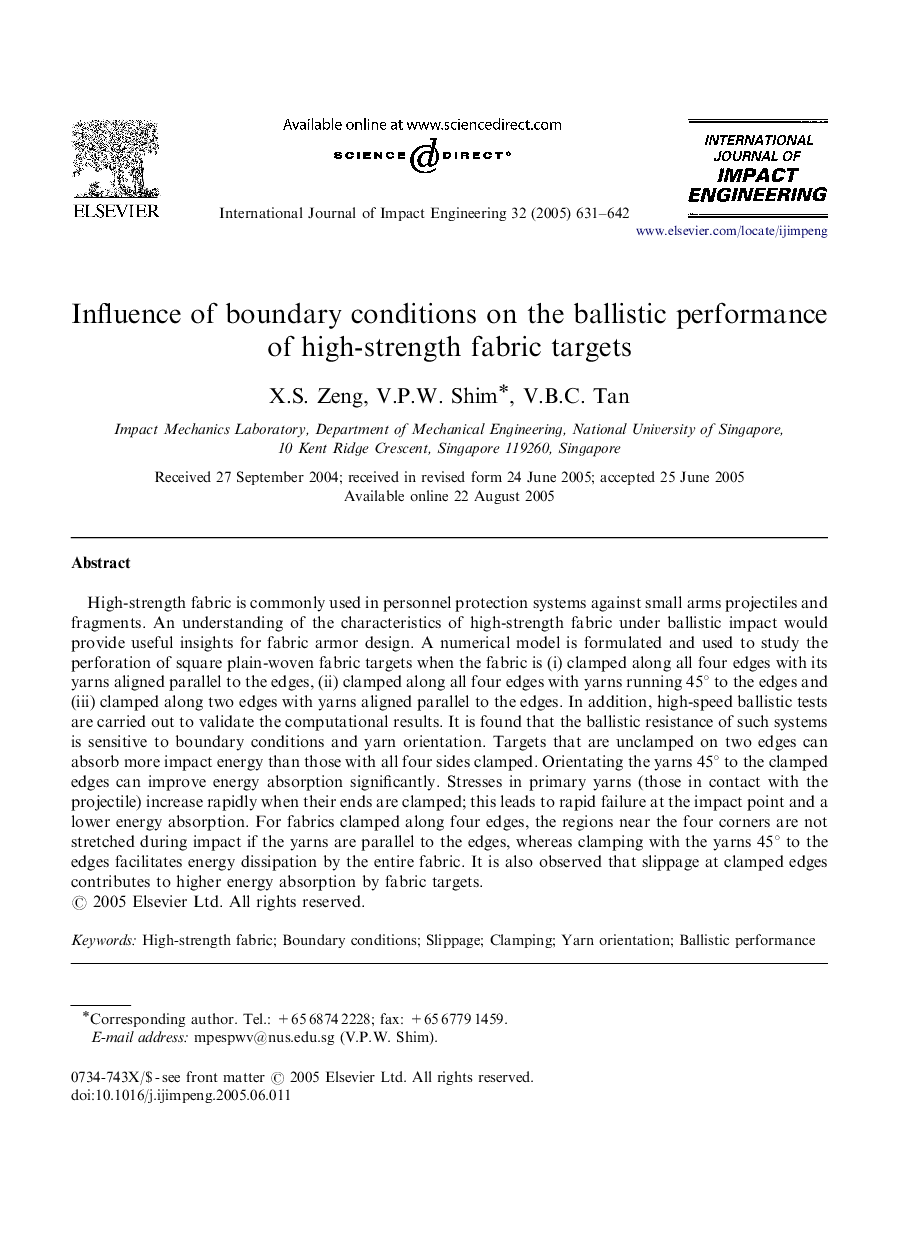| Article ID | Journal | Published Year | Pages | File Type |
|---|---|---|---|---|
| 9704672 | International Journal of Impact Engineering | 2005 | 12 Pages |
Abstract
High-strength fabric is commonly used in personnel protection systems against small arms projectiles and fragments. An understanding of the characteristics of high-strength fabric under ballistic impact would provide useful insights for fabric armor design. A numerical model is formulated and used to study the perforation of square plain-woven fabric targets when the fabric is (i) clamped along all four edges with its yarns aligned parallel to the edges, (ii) clamped along all four edges with yarns running 45° to the edges and (iii) clamped along two edges with yarns aligned parallel to the edges. In addition, high-speed ballistic tests are carried out to validate the computational results. It is found that the ballistic resistance of such systems is sensitive to boundary conditions and yarn orientation. Targets that are unclamped on two edges can absorb more impact energy than those with all four sides clamped. Orientating the yarns 45° to the clamped edges can improve energy absorption significantly. Stresses in primary yarns (those in contact with the projectile) increase rapidly when their ends are clamped; this leads to rapid failure at the impact point and a lower energy absorption. For fabrics clamped along four edges, the regions near the four corners are not stretched during impact if the yarns are parallel to the edges, whereas clamping with the yarns 45° to the edges facilitates energy dissipation by the entire fabric. It is also observed that slippage at clamped edges contributes to higher energy absorption by fabric targets.
Related Topics
Physical Sciences and Engineering
Engineering
Mechanical Engineering
Authors
X.S. Zeng, V.P.W. Shim, V.B.C. Tan,
